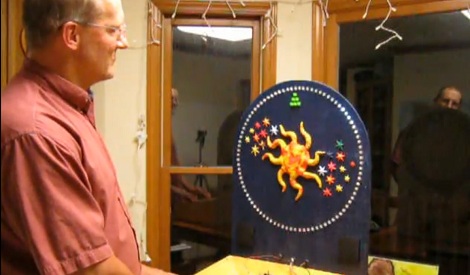
The North Carolina Maker Fare was last weekend, and over the course of the festivities [Dave] was asked for the documentation for the arcade game he built. It’s a neat build, so we’re very glad he chose to share it with us.
Anyone who has been to an arcade in the last 15 years has seen the game [Dave] was inspired by. The object of the game is to hit a button when the sequentially illuminated lights are in a particular position. [Dave] built his own version out of 90 LEDs and a very tiny FPGA dev board.
The 90 LEDs are controlled by the FPGA using charlieplexing, and are illuminated in sequence when the game starts. A heavy-duty emergency switch button modified into a momentary push button takes a hit whenever the player thinks the LED will land in the ‘jackpot zone.’ If the player wins, a buzzer sounds and much excitement is had by all.
Seeing as how the arcade version of this game is a complete rip off and is impossible to win, we really like [Dave]’s version. You can check out his demo video after the break.
[youtube=http://www.youtube.com/watch?v=w0gGeJx_YCM&w=470]














this is look cool, this is the first time i see it
Interesting game, if not a little too simple.
However I’m sure this could be done with a microcontroller like a PIC or an Atmel AVR using multiplexing or an LED driver, even with 90 of them.
Sure its fine if you’ve only got an FPGA on hand, but it seems a little overkill in general.
Still, great work!
Stu, you’re right. The reason I used the FPGA was to demonstrate the uses of FPGAs in projects to attendees of the Maker Faire. This was the simplest introductory project I could think of.
Stu, you’re right. The reason for the FPGA was so I could introduce the use of FPGAs in projects to attendees of the Maker Faire. This project was the simplest I could think of that would at least be interesting.